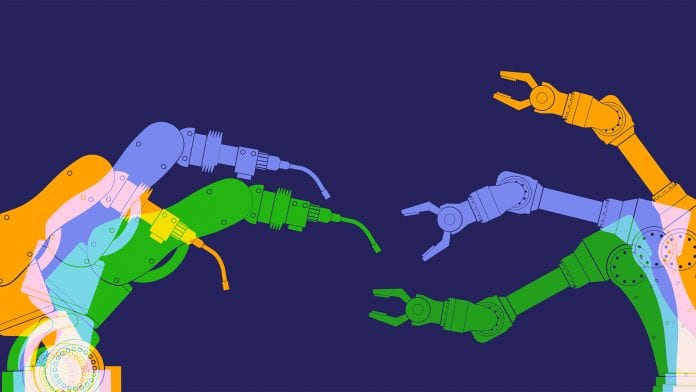
A team of researchers has presented a new concept for using robotics in infectious hospitals that could help to mitigate the spread of infections in the future.
In light of the COVID-19 pandemic and the danger posed to healthcare professionals and human personnel, a team of multidisciplinary researchers from the Intelligent Robotics Systems Lab, the Institute of IT and Intelligent Systems, and the Tatarstan Academy of Science, explored the idea of utilising robotics in healthcare as a solution, which they say may become a worldwide standard in the future.
In their paper, published in Advanced Robotics, the team have put forward a novel holistic architecture of an infectious disease hospital that employs robotic tools – both existing ones and proposed future technologies.
Harnessing robotics in healthcare
The idea to explore robotics for infectious hospitals followed non-systematic attempts of most technologically developed countries in Europe, Asia, and America to employ various robots in their reaction to the COVID-19 pandemic.
The authors surveyed pandemics-related research papers that consider infection mitigation from IT, AI, and robotics standpoints, discovering that most of existing papers are surveys which cover existing solutions, or, conversely, present a single technique or a few techniques in a point-wise manner.
Based on this survey, the team proposed a new classification of robots with regards to their usage for pandemic needs and a new classification of robots with regards to a required operator training. The proposed holistic architecture could also help to develop robots with practical applicability and allow designers to define their functions precisely.
Hospital zones
The researchers’ framework operates on the classical organisational structure of hot, warm, and cold zones – where the hot zone is the most dangerous zone of high infection risk, and the cold zone is a safe zone with low infection risk.
The researchers analysed possible daily activities within the three zones and selected several tasks, mainly within the hot zone, which could be successfully performed by robots.
The survey analysis demonstrated that for many of these tasks, several robotic solutions already exist. The team proposed a precise definition of functions that could be performed by robots in an infectious hospital environment with an aim to help hospital managers to select proper solutions which will make the hospital operation more efficient and safer for medical personnel.
The paper also discusses ethical issues of robotics applications, which should be taken seriously both by robot developers and decision-making customers such as hospital managers; the former should ensure ethical guidelines of human-robot interaction and task-oriented strategies before manufacturing the product, and the latter should be aware of potential ethical conflicts while selecting particular products for particular tasks.
The authors strongly believe that robots should gradually replace human personnel within a dangerous hot zone of an infectious hospital and perform routine tasks which do not require high-level medical skills or education in order to increase the safety of doctors and other medical staff, decrease the unnecessary physical and psychological burden, and partially close the existing shortage of medical personnel.
In the future, the team plans to develop the proposed infectious hospital framework and to evaluate its practical application.








